- Continue Shopping
- Your Cart is Empty
Fermented Lemon Lavender Fizz

What You'll Need
Equipment
- measuring cups and spoons
- half-gallon jar with lid
- strainer or cheesecloth
- canning funnel
- bottling funnel
- air tight bottles for storage
Ingredients
- 6 cups water
- 1/2 cup raw honey
- 1 tablespoon white wine vinegar
- 3 tablespoons fresh or dried lavender flowers
- 1 lemon, sliced into 1/4” rounds
Directions
Combine the water, honey, vinegar, lavender, and lemon in a large half-gallon jar.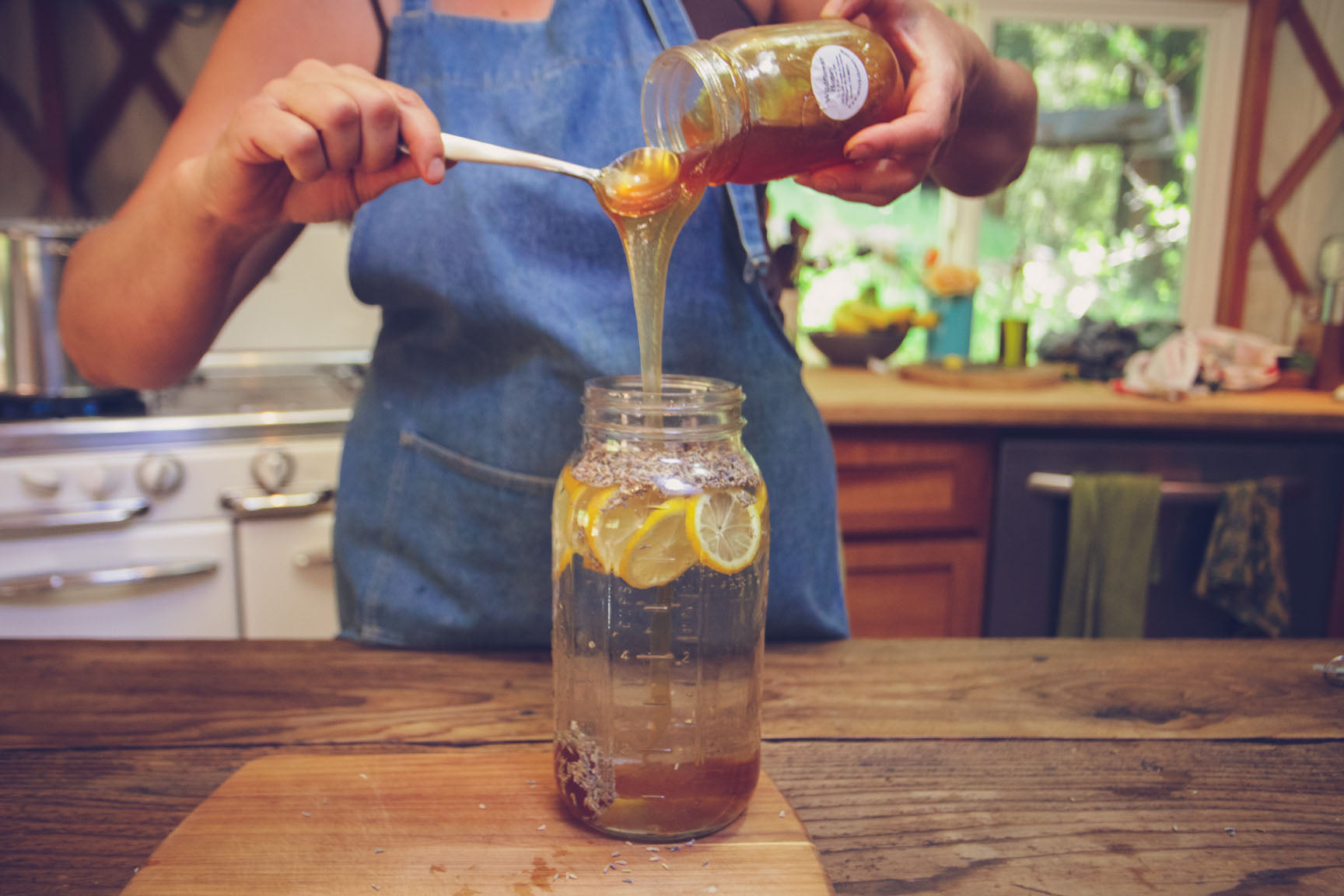 Screw the lid on tightly, and shake until the honey is dissolved.
Screw the lid on tightly, and shake until the honey is dissolved. 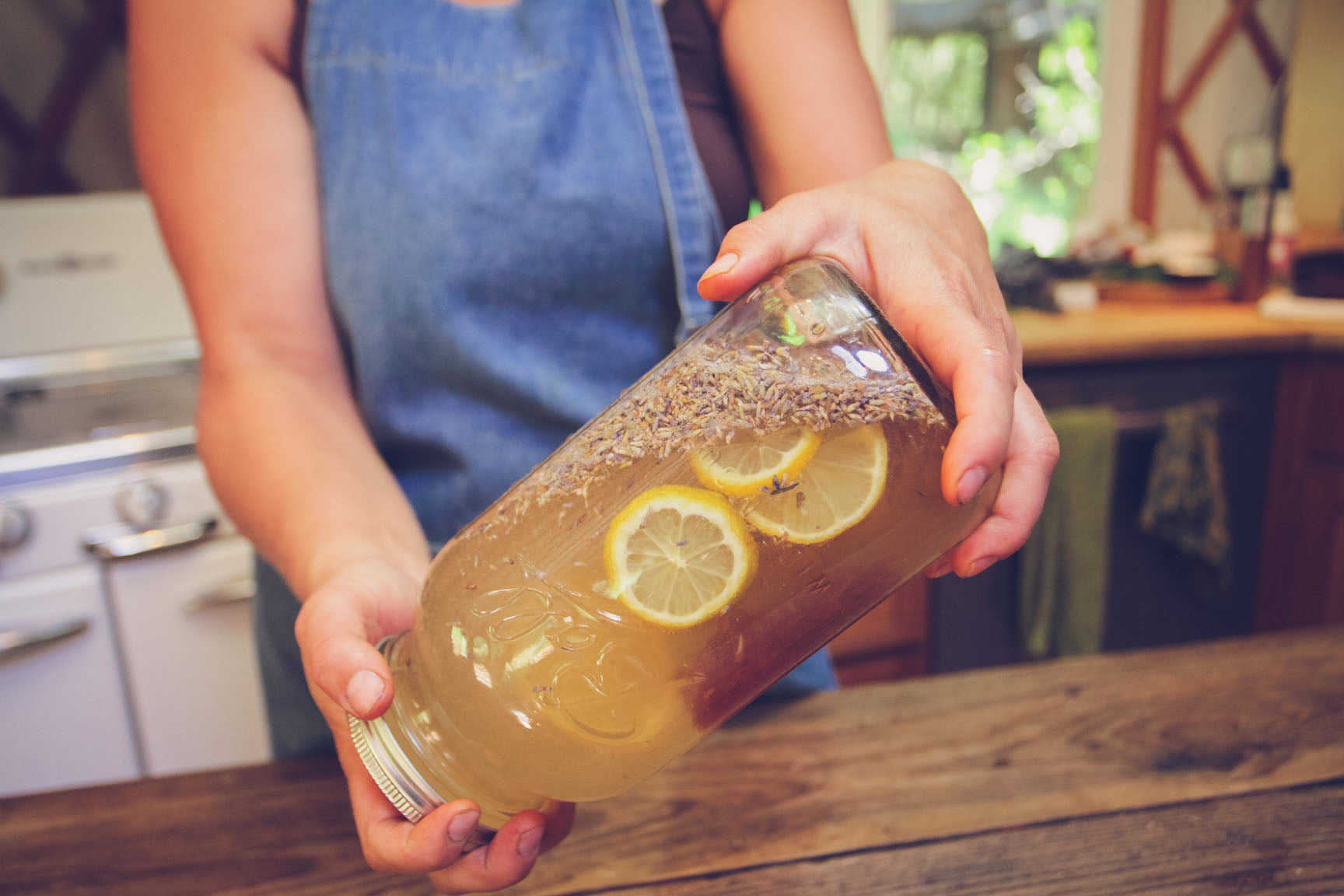 Loosen the lid so that the seal is only finger-tight, and set the jar aside at room temperature to ferment, out of direct sunlight, for 2 days.
Loosen the lid so that the seal is only finger-tight, and set the jar aside at room temperature to ferment, out of direct sunlight, for 2 days.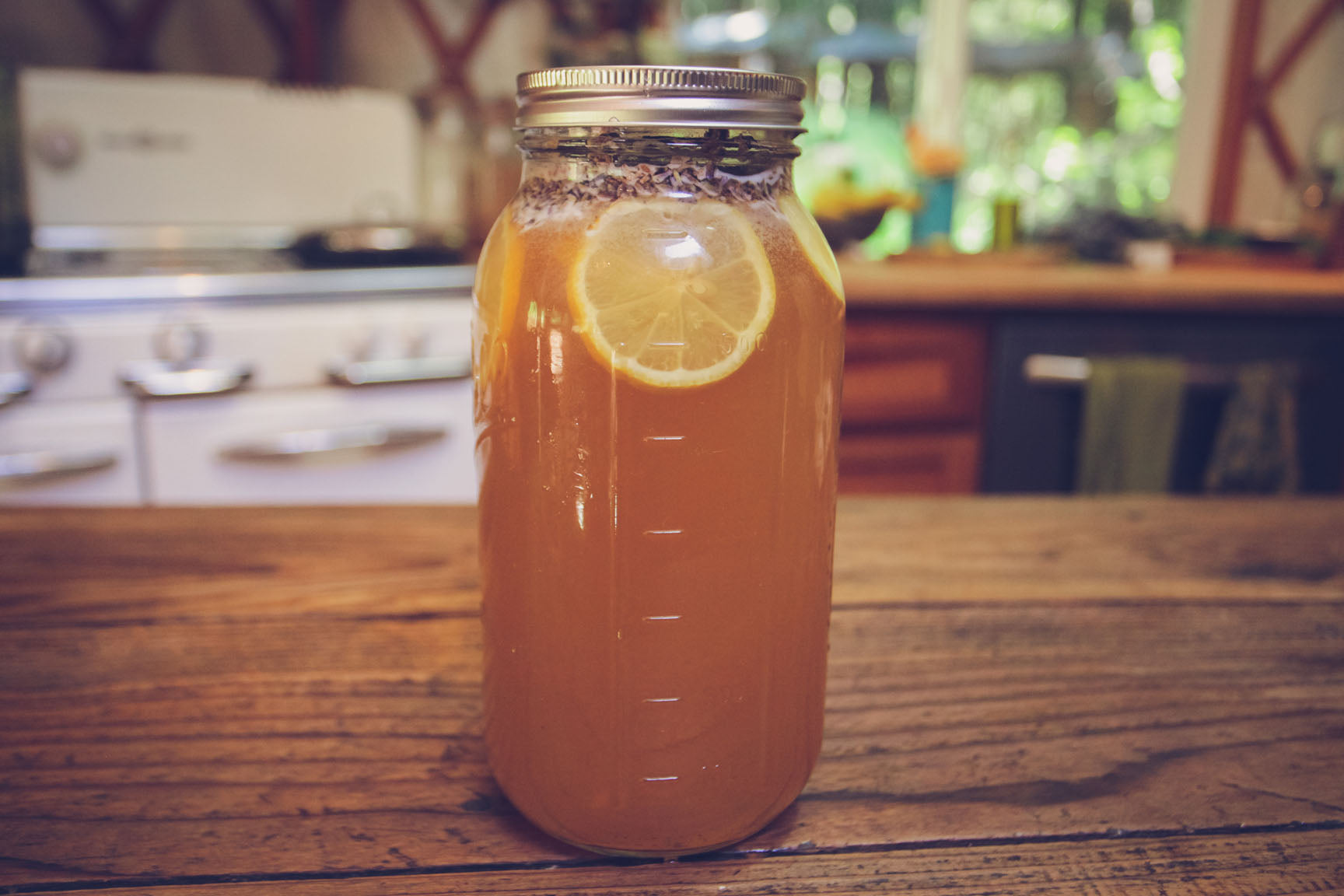 To create carbonation, you must bottle the lemonade in an air-tight container. After 2 days, strain out the lavender and lemon.
To create carbonation, you must bottle the lemonade in an air-tight container. After 2 days, strain out the lavender and lemon. 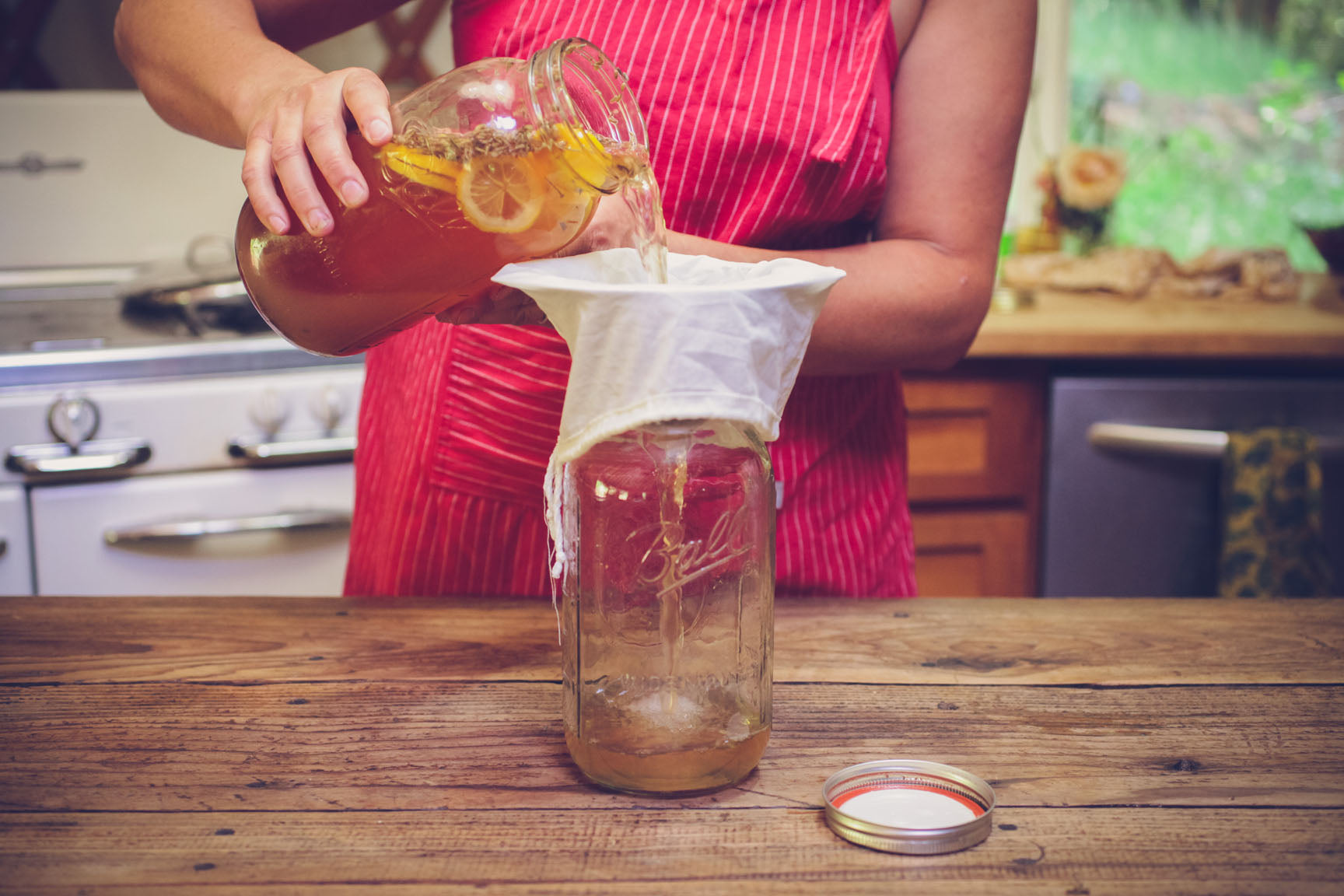 Transfer the liquid to swing-top glass bottles or a clean 1/2 gallon jar, leaving about 1/2” headroom in each bottle or jar. Secure the lids tightly.
Transfer the liquid to swing-top glass bottles or a clean 1/2 gallon jar, leaving about 1/2” headroom in each bottle or jar. Secure the lids tightly.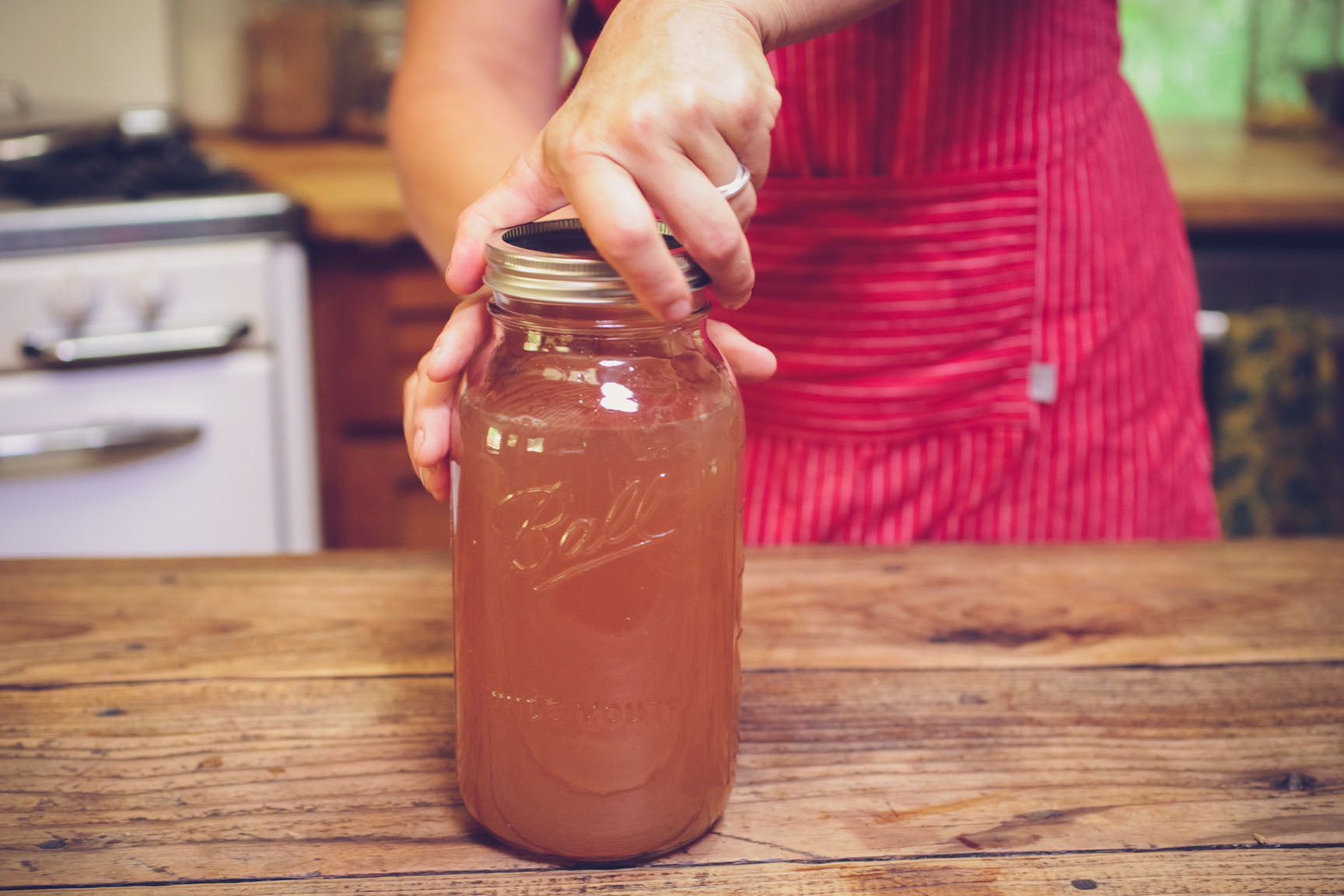 Set the bottles aside in a cool dark place to ferment for 3 days. Test every day after the second day, to monitor how much carbonation has built up; how fast the carbonation builds up depends on temperature and the activity of natural yeasts, which can vary widely. If the soda is still not carbonated to your liking, secure the air-tight lid and continue fermenting till the desired carbonation is reached.
Set the bottles aside in a cool dark place to ferment for 3 days. Test every day after the second day, to monitor how much carbonation has built up; how fast the carbonation builds up depends on temperature and the activity of natural yeasts, which can vary widely. If the soda is still not carbonated to your liking, secure the air-tight lid and continue fermenting till the desired carbonation is reached.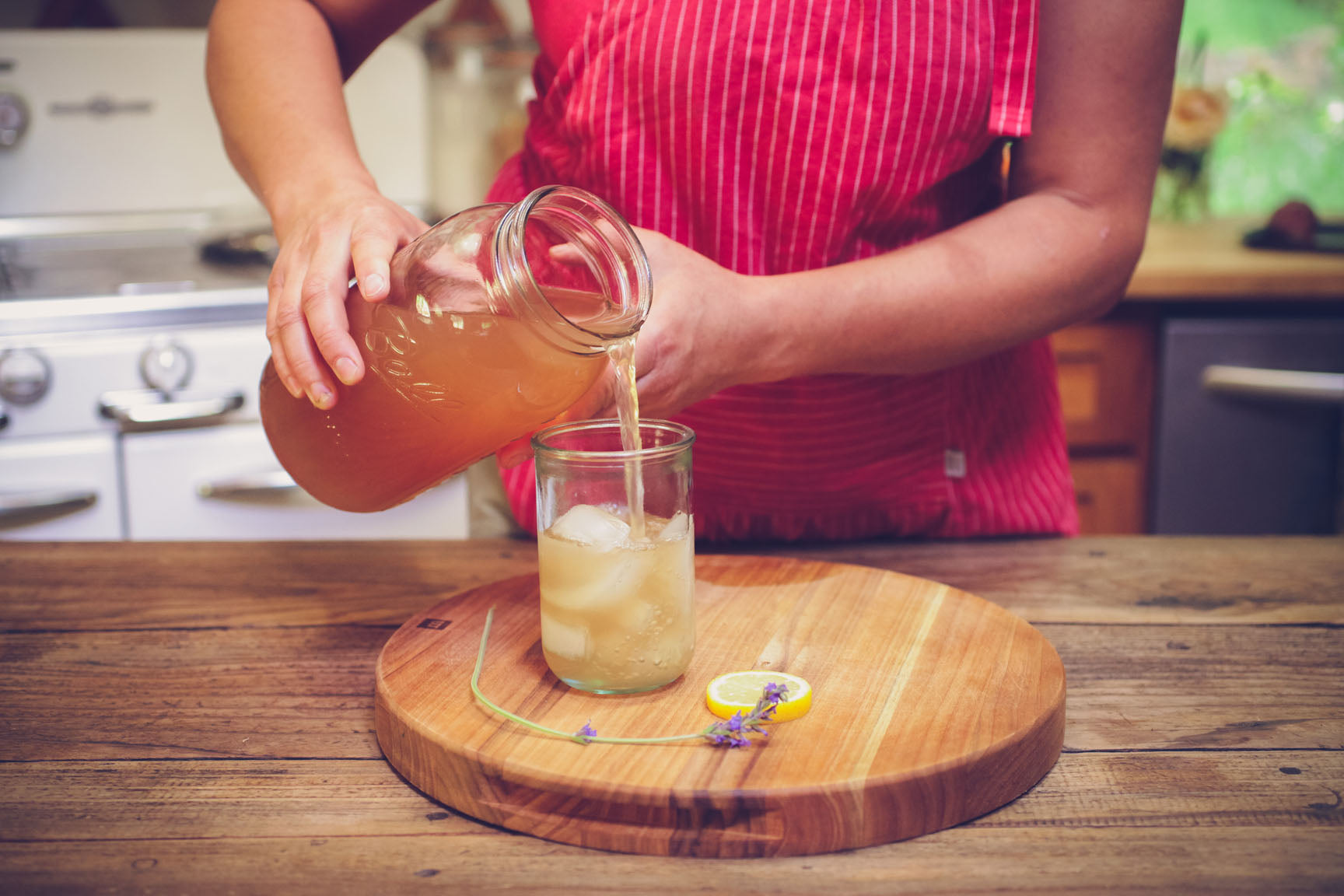 Once the soda has reached the desired level of carbonation, transfer the bottles to the refrigerator. The cold temperatures will slow the fermentation and keep the carbonation at relatively stable levels.
Once the soda has reached the desired level of carbonation, transfer the bottles to the refrigerator. The cold temperatures will slow the fermentation and keep the carbonation at relatively stable levels.
Enjoy!
Over to You
It’s part of our mission here at Mountain Feed to help you make delicious, sustainable, homemade food more often. Stop by and say hello on Facebook, Twitter, Instagram or Pinterest. Or, as always, you can do it the old-fashioned way and come by the store to speak with one of our in-house experts.
